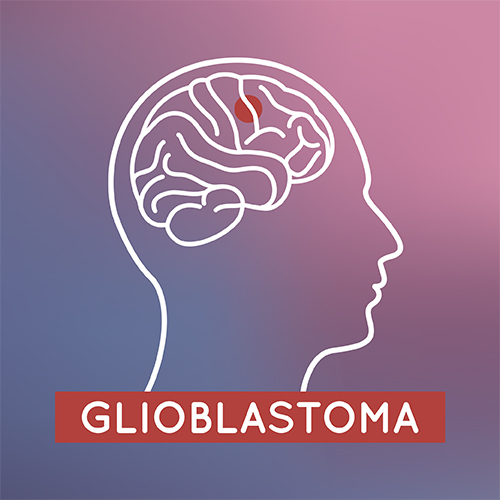By Barbara Greenwood Dufour
Glioblastoma is the most common type of primary brain cancer in adults, with approximately 1,200 Canadians diagnosed with it each year, according to some estimates. It’s a particularly aggressive type of cancer and, even with the best medical treatment available, people who develop glioblastoma typically live for less than two years. Therefore, the goal of glioblastoma treatment is to add time to a patient’s life rather than cure the cancer.
Why is glioblastoma so hard to treat? Standard treatment starts with surgery to remove as much of the tumour as possible; however, because glioblastoma cells spread like tentacles throughout the brain, it’s impossible to surgically remove the entire tumour without also removing and damaging healthy brain tissue. Surgery is followed by a few weeks of concurrent radiation and chemotherapy to destroy the remaining cancer and, after that, patients undergo six cycles of maintenance chemotherapy to slow the regrowth of cancer cells. But the blood-brain barrier — a network of cells surrounding the blood vessels in the brain that protect the central nervous system from harmful substances — limits the amount of chemotherapy that can reach the brain.
Temozolomide is the chemotherapy drug commonly used to treat high-grade gliomas and for maintenance therapy as well. Six cycles of temozolomide therapy is thought to offer patients 14 to 16 months of extended survival. So, could additional cycles extend survival even longer? To find out, CADTH — an independent agency that finds, assesses, and summarizes the research on drugs, medical devices, tests, and procedures — recently conducted a review of the evidence of the effectiveness of extended temozolomide therapy.
CADTH looked for existing research on 12 cycles of maintenance temozolomide therapy in adults with high-grade gliomas, including glioblastoma. According to the two randomized and one non-randomized controlled trials found, an extended regimen might improve survival outcomes compared with six cycles, but the evidence is limited. And temozolomide therapy, as with all chemotherapy, comes with the risk of serious side effects; and the risk increases when therapy is prolonged. Therefore, the benefit of extending maintenance temozolomide therapy is currently uncertain.
A recent increase in research and innovation related to glioblastoma treatment might change how glioblastoma is managed in the future. CADTH continually scans the horizon for emerging drugs, medical devices, and procedures that could have a significant impact on patient care and the health care system but are not yet widely available, in routine clinical use, or licensed for use in Canada. Through its Horizon Scanning service, CADTH recently identified two emerging treatments for glioblastoma. One, called SonoCloud, was featured in CADTH’s Health Technology Update newsletter. The other, called Optune, was the subject of an Issues in Emerging Health Technologies bulletin.
SonoCloud has been developed to open the blood-brain barrier to improve chemotherapy delivery. SonoCloud uses a small ultrasound device implanted in the skull to activate microbubbles that, shortly before a chemotherapy session, are injected into the bloodstream. The pulsed ultrasound causes the microbubbles to expand and contract, temporarily forming tiny openings in the blood-brain barrier that chemotherapy drugs can pass through. The effectiveness of this technology is unclear — trials have so far shown only that SonoCloud safely and effectively opens the blood-brain barrier. Future trials will determine if its use during chemotherapy has an effect on glioblastoma disease progression and patient survival.
The Optune system delivers low-intensity, alternating electric fields — “tumour-treating fields” — to the brain. This is thought to disrupt cancer cell division and cause cell death. Four adhesive patches (transducer arrays) are placed on the head and connected to a portable electric field generator, which can be plugged into an electrical outlet or used with a rechargeable battery pack so the patient can be mobile during treatment. Patients are expected to use the system for at least 18 hours per day. Optune has been proposed as an add-on to standard glioblastoma treatment. It’s intended only for tumours located in the upper region of the brain, and it’s currently unclear which patients it’s most likely to benefit. However, early evidence suggests that, in some patients with newly diagnosed glioblastoma, Optune may add additional months of life.
These are just a few examples of the new therapies and treatment approaches being explored that may eventually offer better ways to delay the recurrence or progression of glioblastoma. For more information on CADTH or to freely access any of the documents mentioned in this article, visit www.cadth.ca. You can also follow us on Twitter: @CADTH_ACMTS, or talk to our Liaison Officer in your region: www.cadth.ca/contact-us/liaison-officers.
Barbara Greenwood Dufour is a Knowledge Mobilization Officer at CADTH.


